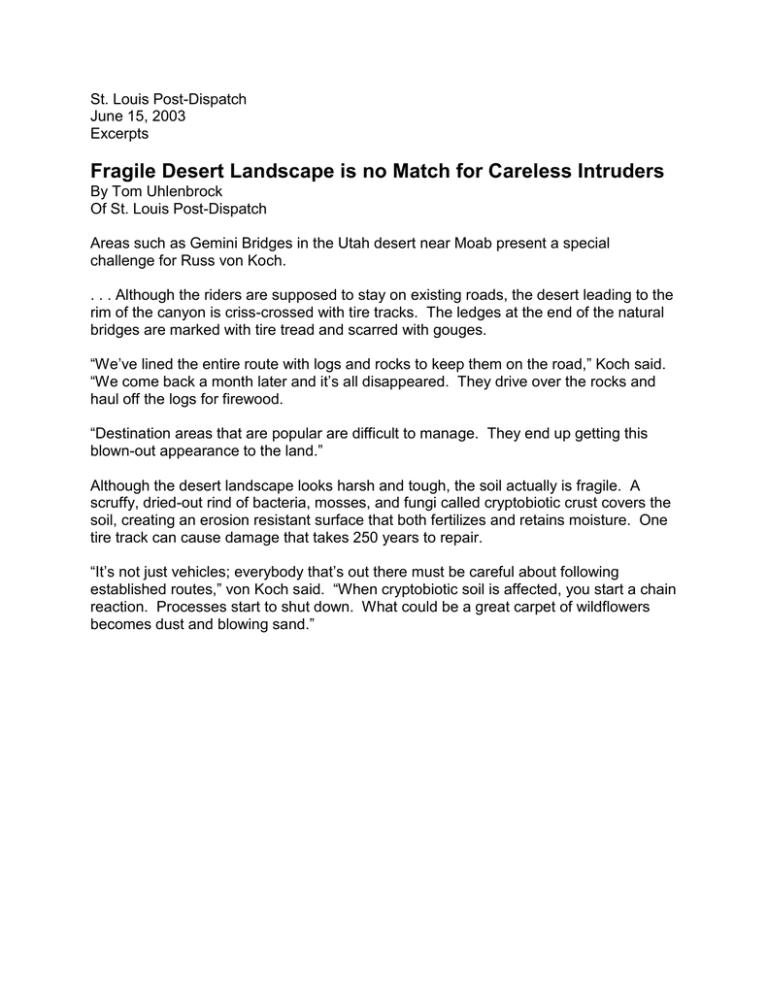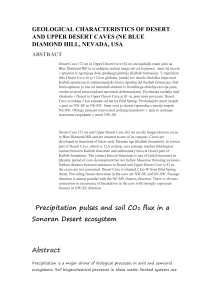Fragilel Desert Landscape is no Match for Careless Intruders
advertisement

St. Louis Post-Dispatch June 15, 2003 Excerpts Fragile Desert Landscape is no Match for Careless Intruders By Tom Uhlenbrock Of St. Louis Post-Dispatch Areas such as Gemini Bridges in the Utah desert near Moab present a special challenge for Russ von Koch. . . . Although the riders are supposed to stay on existing roads, the desert leading to the rim of the canyon is criss-crossed with tire tracks. The ledges at the end of the natural bridges are marked with tire tread and scarred with gouges. “We’ve lined the entire route with logs and rocks to keep them on the road,” Koch said. “We come back a month later and it’s all disappeared. They drive over the rocks and haul off the logs for firewood. “Destination areas that are popular are difficult to manage. They end up getting this blown-out appearance to the land.” Although the desert landscape looks harsh and tough, the soil actually is fragile. A scruffy, dried-out rind of bacteria, mosses, and fungi called cryptobiotic crust covers the soil, creating an erosion resistant surface that both fertilizes and retains moisture. One tire track can cause damage that takes 250 years to repair. “It’s not just vehicles; everybody that’s out there must be careful about following established routes,” von Koch said. “When cryptobiotic soil is affected, you start a chain reaction. Processes start to shut down. What could be a great carpet of wildflowers becomes dust and blowing sand.”





